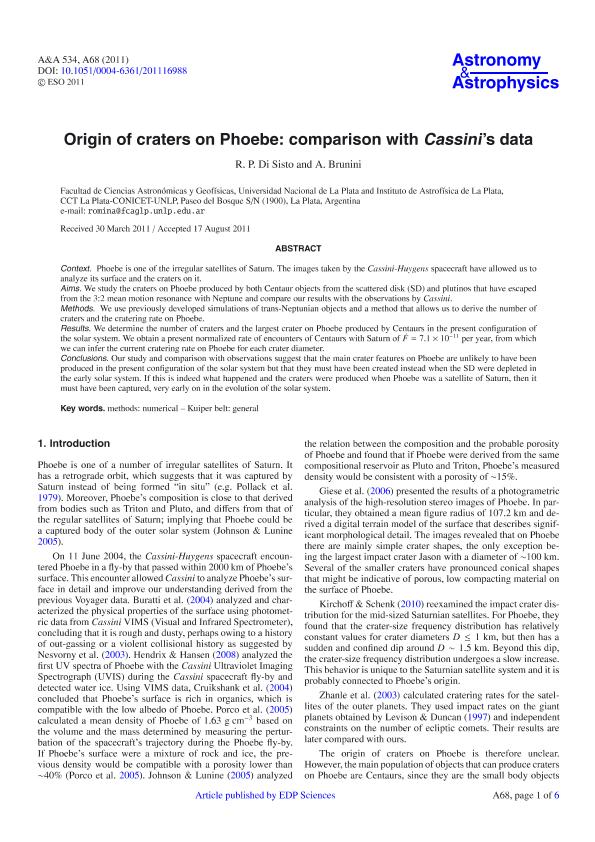Artículo
Origin of craters on Phoebe: comparison with Cassini’s data
Fecha de publicación:
10/2011
Editorial:
Edp Sciences
Revista:
Astronomy And Astrophysics
ISSN:
0004-6361
Idioma:
Inglés
Tipo de recurso:
Artículo publicado
Clasificación temática:
Resumen
Context: Phoebe is one of the irregular satellites of Saturn. The images taken by the Cassini-Huygens spacecraft have allowed us to analyze its surface and the craters on it.
Aims: We study the craters on Phoebe produced by both Centaur objects from the scattered disk (SD) and plutinos that have escaped from the 3:2 mean motion resonance with Neptune and compare our results with the observations by Cassini.
Methods: We use previously developed simulations of trans-Neptunian objects and a method that allows us to derive the number of craters and the cratering rate on Phoebe.
Results: We determine the number of craters and the largest crater on Phoebe produced by Centaurs in the present configuration of the solar system. We obtain a present normalized rate of encounters of Centaurs with Saturn of F˙ = 7.1 × 10−11 per year, from which we can infer the current cratering rate on Phoebe for each crater diameter.
Conclusions: Our study and comparison with observations suggest that the main crater features on Phoebe are unlikely to have been produced in the present configuration of the solar system but that they must have been created instead when the SD were depleted in the early solar system. If this is indeed what happened and the craters were produced when Phoebe was a satellite of Saturn, then it must have been captured, very early on in the evolution of the solar system.
Palabras clave:
Method
,
Numerical
,
Kuiper
,
Belt
Archivos asociados
Licencia
Identificadores
Colecciones
Articulos(IALP)
Articulos de INST.DE ASTROFISICA LA PLATA
Articulos de INST.DE ASTROFISICA LA PLATA
Citación
Di Sisto, Romina Paula; Brunini, Adrian; Origin of craters on Phoebe: comparison with Cassini’s data; Edp Sciences; Astronomy And Astrophysics; 534; 10-2011; 1-6
Compartir
Altmétricas




